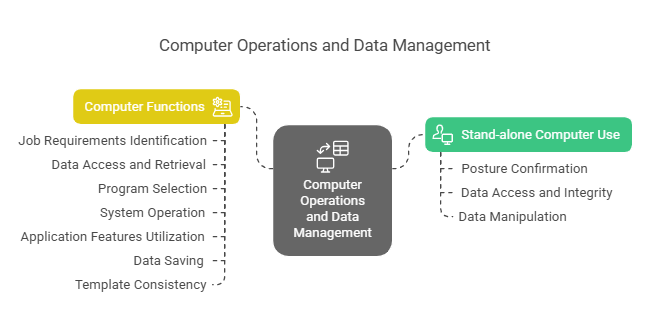Navigating Careers through Computer Systems in Printing and Graphic Arts
Posted by SkillMaker in Mar, 2025
What is a concise description of using computer systems in printing and graphic arts?

Utilizing computer systems in the printing and graphic arts sectors encompasses the use of digital tools and software to create, edit, and manage visual content. This involves prepress processes, digital design, layout, colour management, and printing production using advanced technologies for improved efficiency and creativity.
Listen to this article as a podcast
Why do people in the Printing and Graphics industry need computer systems?
Professionals in the printing and graphic arts industry need computer systems to streamline processes, enhance creativity, and ensure precision in design and production. These systems help reduce manual errors, increase productivity, and enable the handling of complex tasks more effectively. They are essential for meeting the high standards required in today’s competitive market.
“Computer systems revolutionize the printing and graphic arts industry, enabling unparalleled creativity, precision, and efficiency.”
What are the key components or elements of using computer systems in printing and graphic arts?
Key components include:
- Digital Design Software: Tools for creating and manipulating visual content.
- Prepress Procedures: Process of preparing digital files for printing.
- Colour Management Systems: Ensuring consistency and accuracy of colours across devices.
- Printing Technology: Digital presses and printers to produce high-quality prints.
- File Management Systems: Organizing and storing digital assets efficiently.
What key terms, with descriptions, relate to using computer systems in printing and graphic arts?

Registered Trademark®
- Vector Graphics: Images created using mathematical calculations, allowing for infinite scalability without loss of quality.
- Raster Graphics: Pixel-based images that are resolution-dependent.
- Layout Software: Programs used to arrange and compose text, images, and other elements into a cohesive design.
- RIP (Raster Image Processor): Software that translates digital files into a format that printers can understand.
- CMYK vs RGB: Colour models used in printing (Cyan, Magenta, Yellow, Black) versus digital screens (Red, Green, Blue).
Who is typically engaged with operating or implementing computer systems in printing and graphic arts?
Graphic designers, prepress technicians, print operators, and IT specialists are typically engaged in operating and implementing computer systems. These professionals ensure that the technology functions optimally and meets the creative and technical needs of projects.
How does using computer systems align or integrate with other components of Printing and Graphics industry in Australia?

Computer systems are integral to the workflow, connecting design, production, and business management seamlessly. They facilitate communication and collaboration across departments, ensuring projects are completed efficiently and to a high standard. This interconnectedness is vital for maintaining competitive advantage and adapting to technological advancements.
Where can the student go to find out more information about using computer systems in printing and graphic arts?
What job roles would be knowledgeable about using computer systems in printing and graphic arts?
Roles include:
- Graphic Designers
- Prepress Technicians
- Print Operators
- IT Specialists
- Colour Specialists
What is using computer systems in the printing and graphic arts sectors like in relation to sports, family, or schools?

Using computer systems in printing and graphic arts is like a sports team using statistics and technology to strategize and execute plays effectively. In a family setting, it’s akin to organizing family events with digital tools for planning and communication. In schools, it represents the integration of digital learning tools to enhance teaching and streamline educational workflow.
(Skillmaker – 2025)

 Post Tagged with
Post Tagged with